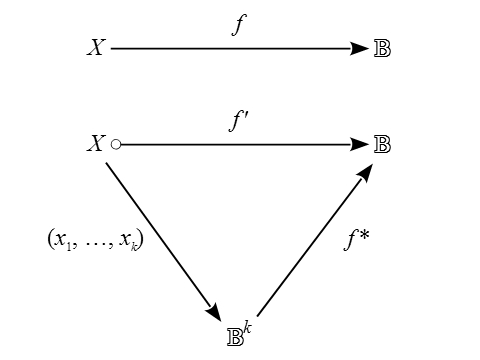Re: R.J. Lipton and K.W. Regan • Who Invented Boolean Functions?
One of the things it helps to understand about 19th Century mathematicians, and those who built the bridge to the 20th, is that they were capable of high abstraction — in Peirce’s case a cut above what is common today — and yet they remained close enough to the point where abstract forms are teased away from the concrete materials of mathematical inquiry to maintain a sense of connection between the two. There are few better places to see this connection than in the medium of venn diagrams. But venn diagrams are such familiar pictures that it’s easy to overlook their subtleties, so it may be useful to spend some time developing the finer points of what they picture.
There are actually several types of boolean functions depicted in the typical venn diagram. Each has the boolean domain or one of its powers
as its functional codomain but its functional domain need not be limited to a finite cardinality. To sort their variety, consider the array of functional arrows in the following figure.
Suppose is a universe of discourse represented by the rectangular area of a Venn diagram. Note that the set
itself may have any cardinality. The most general type of Boolean function is a map
This is known as a Boolean-valued function since only its functional values need be in
A function of the type is called a characteristic function in set theory or an indicator function in probability and statistics since it can be taken to characterize or indicate a particular subset
of
namely, the fiber or inverse image of the value
for which we have the notation and definition
The notation is often used for the characteristic function of a subset
of
Putting all the pieces together then, we have
To be continued …

